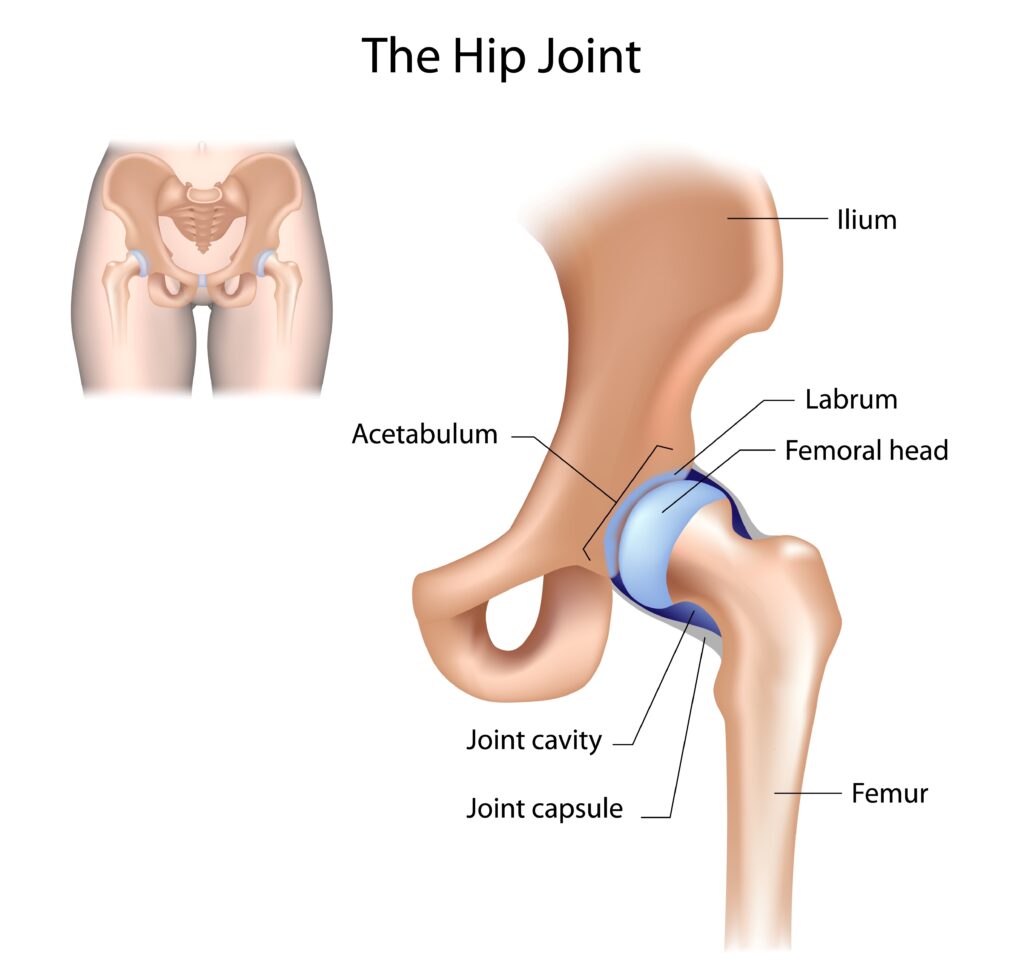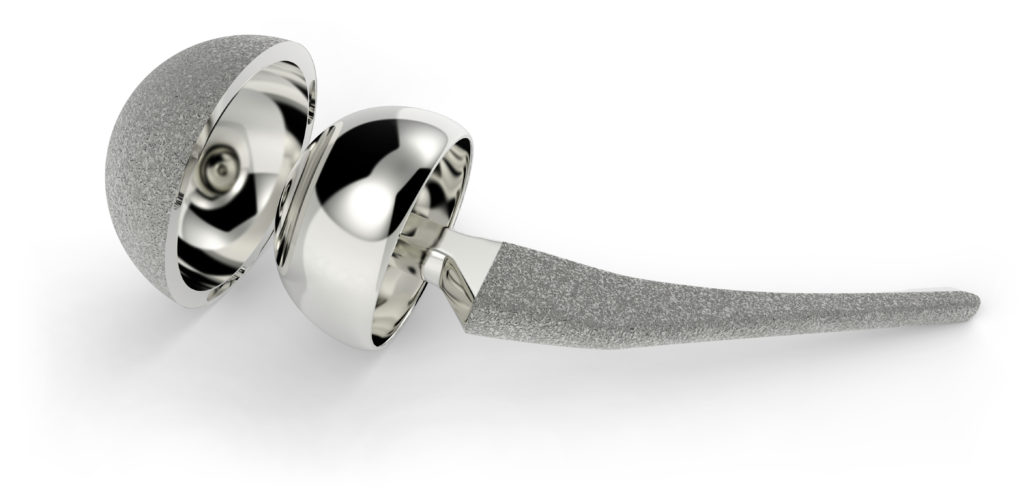Total hip replacement surgery, also called total hip arthroplasty, is a procedure that replaces the damaged or diseased hip joint with an artificial implant. This surgery can provide relief from pain and restore mobility. It is usually performed on patients who have hip joint damage from arthritis, injury, or other conditions, making activities such as walking or getting in and out of a chair painful and difficult.
In this blog post we will discuss the benefits of total hip replacement surgery, explain the anatomy of the hip joint, and discuss who might be a good candidate for this type of surgery. We will also explain the process of total hip replacement surgery so that you can know what to expect and how to prepare before and after the procedure.
Benefits of a total hip replacement
The main reason most people have hip replacement surgery, and a major benefit of the procedure, is the ability to walk and move without chronic and excruciating pain anymore. Most people report their joint pain is either significantly reduced or completely eliminated. After recovering from a total hip replacement, many people resume their normal activities and hobbies they had before hip pain interfered. Being able to move with less pain is a definite benefit of hip replacement surgery.
Anatomy of the hip
The hip joint is called a ball and socket joint. The “ball” which is known as the femoral head, sits in the acetabulum, or “the socket” of the pelvis bone. The femoral head is attached to the rest of the femur (thighbone) by a neck. Two bones that make up the acetabulum are called the ilium and ischium. The ilium is the upper part of your hip bone that you can feel when you place your hand on your hip. The ischium is the lower, back part of your hip bone that you sit on. Both bones are connected by a pubic symphysis in the front. The socket of the hip joint is lined with a smooth tissue called articular cartilage which covers the surface of the bones, allowing for a smooth gliding motion at the joint. These strong ligaments and muscles reinforce the hip joint and provide a great amount of stability and strength.

Who is a candidate for total hip replacement surgery?
Candidates for total hip replacement surgery typically have hip pain that limits their activities. Dr. Jamieson’s recommendation for this surgery is based on a patient’s pain and disability, not always age. Commonly, most patients who undergo total hip replacement are around the ages of 50 to 80, but each patient is evaluated individually. Dr. Jamieson has performed hip replacement surgery for patients whose age ranges from mid 30’s to mid 90’s.
Hip replacement surgery might also be an option if nonsurgical treatments have proven to be unhelpful or are no longer effective. Damage from arthritis is the most common reason to need hip replacement. Conditions that can damage the hip joint, sometimes making hip replacement surgery necessary, include:
- Osteoarthritis – known as wear-and-tear, this arthritis can damage the slick cartilage that covers the ends of bones and helps the joints move smoothly.
- Rheumatoid arthritis – caused by autoimmune disease, the synovial membrane becomes inflamed and thickened which can destroy cartilage and occasionally underlying bone, resulting in damaged or deformed joints.
- Osteonecrosis – when there isn’t enough blood supplied to the ball portion of the hip joint, possibly resulting from a dislocation or fracture, causing the bone to possibly collapse and deform.
- Post-traumatic arthritis – following a serious hip injury or fracture, the cartilage may become damaged and lead to hip pain and/ stiffness over time.
What is a total hip replacement surgery like?
The hip joint can be accessed from different angles, which will be decided upon by Dr. Jamieson depending on each individual patient’s needs. Three common options for a total hip are from the side – known as the lateral approach; from the back – called a posterior approach, and from the front – which is called an anterior approach. During your consultation, Dr. Jamieson and his team will discuss which option would be best for you and what to expect. The surgical approach depends on several factors, including how Dr. Jamieson will gain access to the hip, the type of implant and how it will be attached, your age and activity level, and the health of your hip bones.
Once in the operating room, the anesthesiologist will give you medications to keep you asleep and remain pain-free. A traditional hip replacement includes a single, large incision that helps Dr. Jamieson gain access to the hip, usually through the anterior approach. The size of the incision will vary depending on many factors, including your physical size and Dr. Jamieson’s preferences. The muscles and tissues will be retracted to help gain access to the hip joint where the damaged bone will be replaced.
During total hip replacement surgery, both the ball (femoral head) and the socket (acetabulum) are removed and replaced with an artificial implant. The artificial hip joint is usually made of metal and plastic.
First, the femur is separated or dislocated from the acetabulum. The damaged cartilage surface of the socket is removed and smoothed by an instrument called a reamer and replaced with a metal cup (socket). Screws or cement are sometimes used to hold the new socket in place. A liner made of either plastic, ceramic, or metal is inserted into the socket, creating a smooth gliding surface for the hip joint.
The arthritic or damaged femoral head (ball) is removed and replaced with a metal stem that is placed into the prepared hollow center of the femur. The femoral stem may be either cemented or “press fit” into the bone.
Lastly, a metal or ceramic ball is then placed onto the upper part of the stem, replacing the damaged femoral head that was removed earlier in the procedure.

Dr. Jamieson will remove the instruments and the incision is then closed with sutures and/or staples and covered with a sterile dressing.
After surgery, patients can expect to experience some pain and discomfort. This is normal and will gradually improve as the incisions heal. Physical therapy will also be necessary to help patients regain their strength and range of motion.
Can you get both hips replaced at the same time?
Both left and right hips can be replaced during a single surgery. This type of double hip replacement is also known as a bilateral hip replacement. If you are having severe issues with both hips, Dr. Jamieson might recommend a double hip replacement only if you are in good health and can tolerate a longer surgery and a more challenging recovery.
Preparing for total hip replacement surgery
To prepare for the surgery, you’ll have an exam with the Dr. Jamieson, who will describe what to expect and answer any questions or concerns you may have. It is advised that patients stop smoking and using any tobacco products, as well as avoid taking certain medications, such as aspirin or ibuprofen, that can increase the risk of bleeding. Before having surgery, make sure you have arranged for someone to help you get to and from the hospital and available to help with your initial recovery at home.
Recovery from total hip replacement surgery
After undergoing a total hip replacement, you will be taken to a recovery room where you will be monitored until your blood pressure, heart rate, and breathing are stable. Provided there are no complications, and depending on your mobility, it is common for many people to go home that same day.
Recovery time from this surgery can vary from person to person, but most patients are able to return to their normal activities within a few months and continue through the first year. It is important to follow Dr. Jamieson’s instructions and attend physical therapy sessions to ensure a successful recovery.
Total hip replacement surgery can be an effective option to provide relief from pain and restore mobility. If you feel you may be a candidate for this procedure, we invite you to schedule an appointment with Dr. Jaimeson. Please click here to contact us.


